We run our website the way we wished the whole internet worked: we provide high quality original content with no ads. We are funded solely by your direct support. Please consider supporting this project.
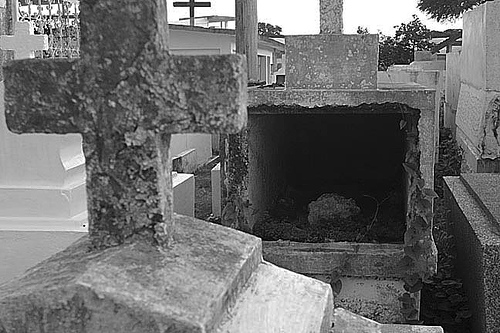
Rethinking the Resurrection
As much as every other aspect of Jesus life and ministry, I submit that the resurrection must be understood in light of the cross. This event was not anything like the resuscitation of a random corpse. It was the resurrection of the Incarnate Son of God who had fulfilled the human side of the God-human covenant by living a sinless life and who, as an unsurpassable expression of divine love, came to enter into the deepest darkness of evil and assume that evil upon himself. Understood as such, the resurrection can only be viewed as God’s vindication of the self-sacrificial life and death of this God-man through whom God’s eternal character was made known.
For this reason the resurrection must not be interpreted as a display of triumphalist power that contrasts with the humble, cruciform, character of God revealed on the cross as well as throughout Jesus’ life ministry. It was rather a display of power that confirmed that the cross is in fact the revelation of God’s true character and that God’s enemy-loving, non-violent, self-sacrificial way of responding to evil is in fact victorious.
For this reason, the One who sits on the throne in the Book of Revelation and who alone is worthy to open the scroll of God’s plan for history is the victorious lamb who was “slaughtered” (Rev. 4-5; 21:22l 22: 1,4). And for this reason those who conquer are depicted as doing so because they “follow the Lamb wherever he goes” (Rev. 14: 4), bearing witness to his victory and imitating his sacrificial death (Rev. 12:11).
Moreover, throughout Revelation we find the emphatic declaration that the glorified and victorious Jesus is one and the same as the crucified Jesus (see Rev. 5:6, 9, 12; 7:14, 17; 12:11; 13:8; 17:14).
Along the same lines, we can see that the resurrection of Jesus confirmed rather than sat aside the cruciform nature of his life and death in the very fact that for Paul, as much as for John who wrote Revelation, the “glorified” Lord is one and the same as the crucified Lord (2 Cor. 4:4-6; Phil 2:6-11). This is precisely why all who have been raised with Christ and who therefore participate in his resurrected life reflect their participation by taking on a cruciform character that leads them to sacrificially serve others, including their enemies, just as Jesus did.
The same point is made by noting that for Paul, the Spirit that dwells within believers is the Spirit of the crucified Christ that empowers them to live according to “the law of Christ” (Gal 6:2), which is to love others as he loved us “when he gave his life for [us]” (Eph. 5:1-2).
Ernst Käsemann once stated that the cross is “the signature of the one who is risen.” The surest sign that anyone belongs to him is that they participate is Christ’s risen life, which means they participate in the expression of his self-sacrificial love.
Image by Keith Bacongco via Flickr.
Category: General
Tags: Cross, Cruciform Theology, Jesus, Resurrection, Revelation
Topics: Christology
Related Reading
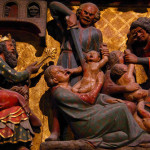
Is the Bible History?
Even though I argued for interpreting the final form of the biblical canon as opposed to using the history behind the text in my post yesterday, I am not endorsing the radical post-modern view that biblical texts possess “semantic autonomy” and thus lack any historical referentiality. While I have no problem whatsoever accepting that God used folklore and myth…
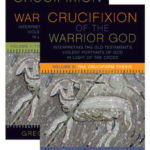
Crucifixion of the Warrior God Update
Did you know that authors generally don’t have much say-so about the cover art for their books? It’s considered part of the marketing, so the author may or may not like how it ends up looking. I’ve had a few book covers that made me scratch my head. (I won’t tell you which ones, but it would…

The Image of God
Distorted from digma.com Is the image of God you hold in your heart one that attracts or repels you?

How is the Bible “God-Breathed”?
The historic-orthodox church has always confessed that all canonical writings are “God-breathed” (1 Tim 3:16). But what exactly does this mean? How could God guarantee that the writings that his “breathing” produces are precisely what he intended without thereby undermining the autonomy of the agents he “breathes” through? In other words, did God breathe the…
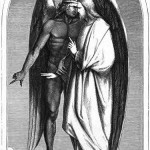
What Does Spiritual Warfare Have To Do with the Cross?
Last week, we covered a few posts on the nature of the Atonement and the Christus Victor view. The following continues this theme, specifically looking the motif of spiritual warfare and how it relates to Christ’s work on the cross. This is an adaptation from Greg’s article in The Nature of the Atonement: Four Views. …
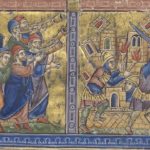
Reading the Bible “by Faith”
The cruciform approach to reading the Bible—and specifically the culturally-conditioned and sin-stained portraits of God—requires faith on the part of the reader, which I argue in Crucifixion of the Warrior God. On one level we can discern by faith that often times God broke through the limitations and sin of the ancient authors, for we…
